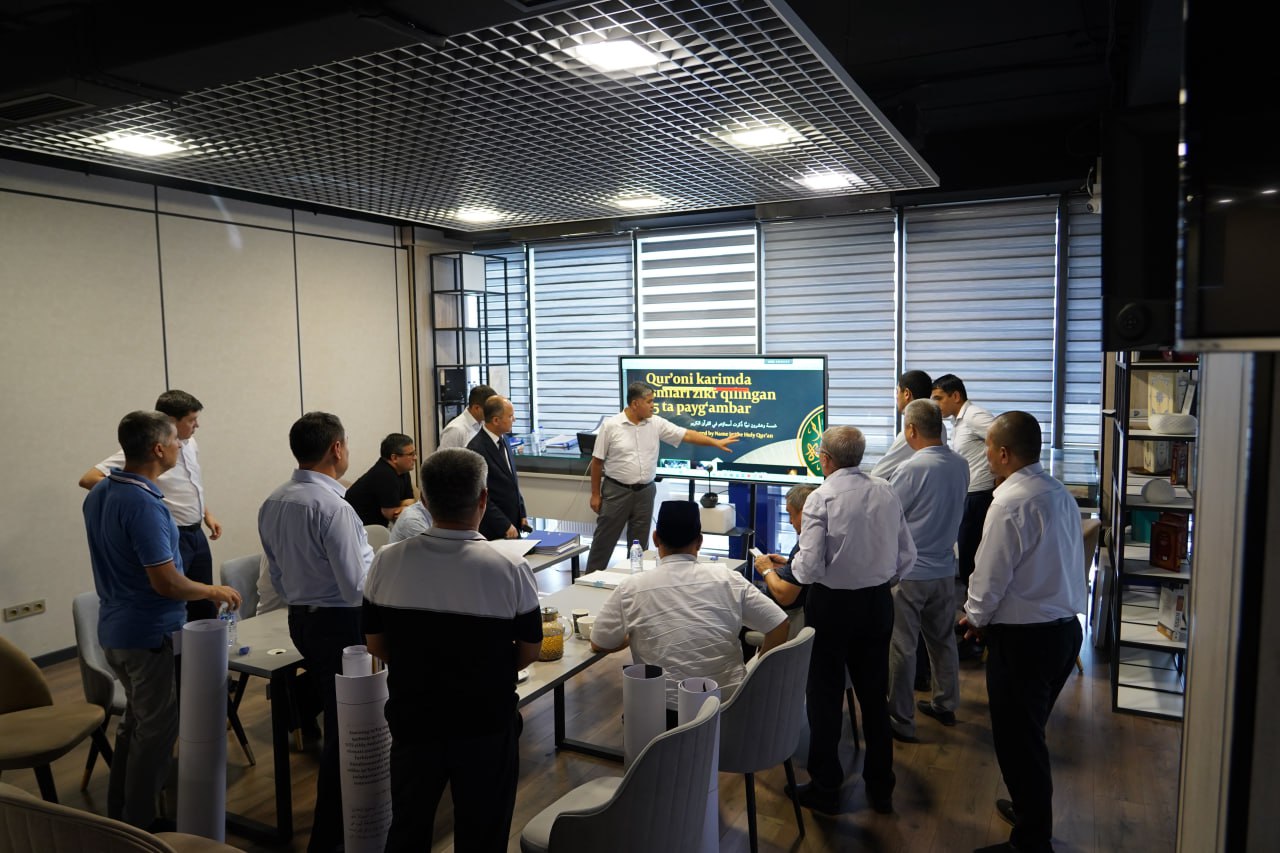“Sahih al-Bukhari” in 22 languages: translations are being refined at the innovative Imam Bukhari museum
👉 The hadiths of “Ṣaḥīḥ al-Bukhārī” are being translated into 22 languages.
👉 Specialists have been engaged for each language to ensure stylistic, orthographic, and semantic accuracy.
👉 Attention is being paid to making the translations technically and visually consistent.

At the Center of Islamic Civilization in Uzbekistan, the next working group meeting was held to further refine the content of the nine-pavilion exposition being prepared for the innovative Imam Bukhari Museum.
The meeting discussed how each pavilion should represent Imam Bukhari’s legacy, Islamic scholarship, historical figures, and spiritual values through modern visual approaches.
Special emphasis was placed on the translation of the hadiths of “Ṣaḥīḥ al-Bukhārī” into 22 languages, which are planned to be featured in Pavilions 7 and 8.
It was stressed that for each language, guidance from specialists on stylistic, orthographic, and semantic aspects must be obtained. It was also noted that experts in fields such as English, Japanese, Korean, and Urdu are already working on the translations.
At the meeting, Sh. Minavarov, head of department at the Center of Islamic Civilization in Uzbekistan, emphasized the necessity of consistently involving Uzbek language specialists in the editing and publishing process.
 According to him, once all translations are finalized, each version must be analyzed based on the Uzbek texts, ensuring the preparation of high-quality electronic copies.
According to him, once all translations are finalized, each version must be analyzed based on the Uzbek texts, ensuring the preparation of high-quality electronic copies.
The meeting also pointed out that discrepancies across various sources regarding the total number of hadiths in “Ṣaḥīḥ al-Bukhārī” remain unresolved, and stressed the need for scholarly research to reach a unified conclusion.
Furthermore, attention was given to ensuring that the wall texts in Uzbek, Arabic, and English are harmonized both technically and visually.
These ongoing efforts for the newly established innovative Imam Bukhari Museum are significant, as they aim to present the sacred heritage of hadith scholarship on a global scale with both academic rigor and aesthetic depth.
Most read

Over 100 experts from more than 20 countries of the world are in Tashkent!

President of Serbia Aleksandar Vučić visited the Islamic Civilization Center in Uzbekistan

The Center for Islamic Civilization – a global platform leading towards enlightenment











